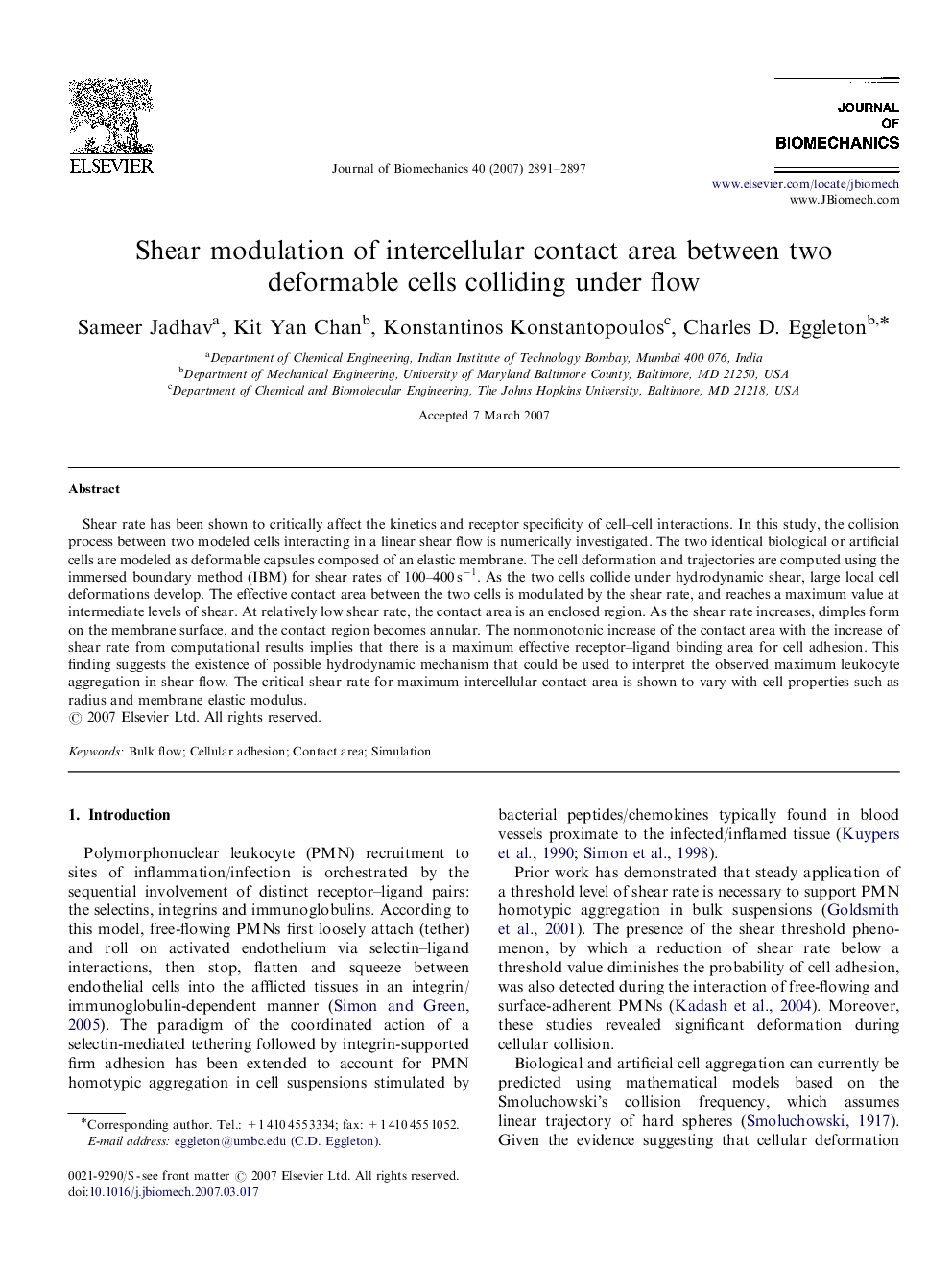| Article ID | Journal | Published Year | Pages | File Type |
|---|---|---|---|---|
| 874238 | Journal of Biomechanics | 2007 | 7 Pages |
Shear rate has been shown to critically affect the kinetics and receptor specificity of cell–cell interactions. In this study, the collision process between two modeled cells interacting in a linear shear flow is numerically investigated. The two identical biological or artificial cells are modeled as deformable capsules composed of an elastic membrane. The cell deformation and trajectories are computed using the immersed boundary method (IBM) for shear rates of 100–400 s−1. As the two cells collide under hydrodynamic shear, large local cell deformations develop. The effective contact area between the two cells is modulated by the shear rate, and reaches a maximum value at intermediate levels of shear. At relatively low shear rate, the contact area is an enclosed region. As the shear rate increases, dimples form on the membrane surface, and the contact region becomes annular. The nonmonotonic increase of the contact area with the increase of shear rate from computational results implies that there is a maximum effective receptor–ligand binding area for cell adhesion. This finding suggests the existence of possible hydrodynamic mechanism that could be used to interpret the observed maximum leukocyte aggregation in shear flow. The critical shear rate for maximum intercellular contact area is shown to vary with cell properties such as radius and membrane elastic modulus.
